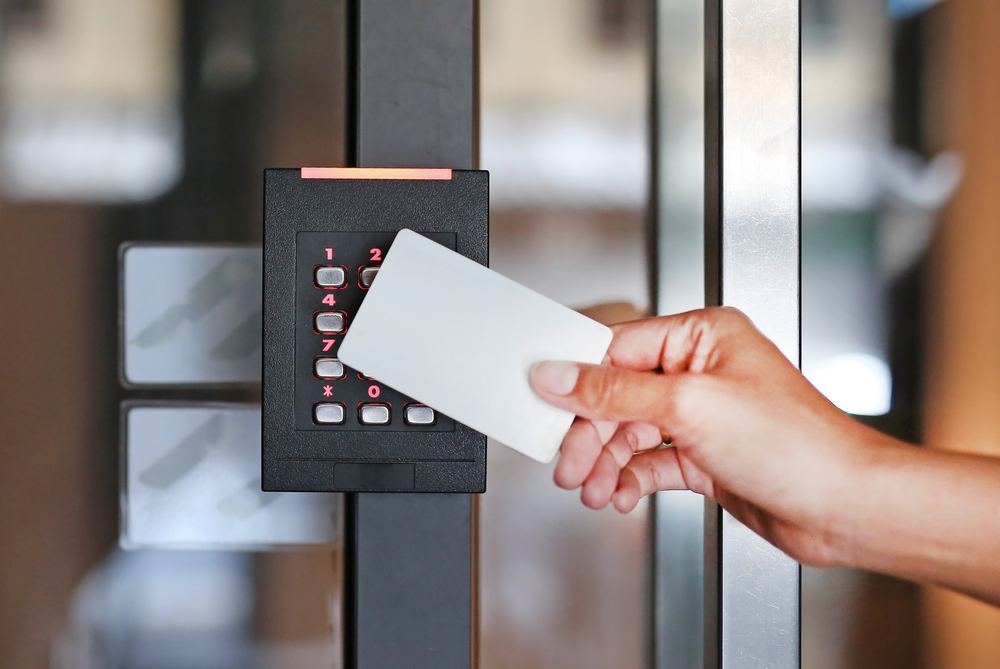
Access control systems enable businesses to control who has access to the entire building or some areas within it. This technique is used to control passage into or out of any area of the building . While the standard lock & key can be an example of an access control system, we will be referring to the electronic access control system in this context.
Ryalex’s access control solutions can form part of integrated security systems in a variety of industries. Access control components can be installed in retail security systems to protect staff and inventory against theft or vandalism. Access control can also form part of an education security system, to protect visitors and rapidly lock down the institution if the system detects unauthorised entry to the premises.
Access control systems grant individuals access to a particular area or resource, such as an office building, storeroom or laboratory. There are a number of advantages of access control systems that have led to their increasing popularity over older security solutions, such as locks and keys.
One of the main benefits of access control systems is that they generate a log of who had access to particular parts of a building at any given time. This can be particularly useful in unforeseen or emergency situations, as the data can be combined with other elements of the access control system, such as CCTV footage, to account for all people present and potentially isolate issues.
Physical access control solutions require each user to authenticate their identity using a credential such as a key card, biometric scanner or keypad. One of the advantages of access control credentials such as these is that they can be programmed to match an individual’s user profile. Credentials can also be set up generically and assigned to visitors upon arrival, in order to offer them the same level of security as an employee.
In most scenarios, access control systems outperform standard locks and keys.
When keys are lost, or stolen, locks need to be changed to mitigate against unauthorised access and keys for all users need to be cut to suit. The cost of this can be quite significant especially for a large business with hundreds of users. Electronic access control systems use credentials in the form of a card or fob. One of the main advantages of electronic access control systems is that these credentials can be easily barred if they are lost or stolen, and a new credential can be programmed to replace it.
Almost all physical keys can be copied, which puts the security of your business and assets at risk. Credentials, however, are unique to the user. The communication between the card and reader is encrypted to ensure the credentials cannot be copied.
One of the other benefits of access control systems is the level of customisation it affords business owners. For example,, particular doors in the system can be programmed to allow access to select users only, enhancing both convenience and security . The doors may also be restricted by the time of day or day of the week. For elevators, you can choose which levels can be accessed, and at what times of day.
Access control systems vary in type and complexity according to the needs of each client’s workplace safety system, however, they usually have the following components:
Simply put, this is the key that the person will hold, but an electronic one that looks like a credit card, allowing specific access to certain areas through the card readers
If access cards are the electronic keys, card readers act as the lock that read the unique encoded access cards. These can have different types and sizes to suit the application, including the standard prox, Mifare or multifunction readers which can include a code pad for high security areas.
This is the equipment that will lock the door. They come in different shapes & types according to the door’s condition; these include electric locks, electric strikes, electromagnetic locks, electric exit devices, and many others. This never restricts the option to exit a building to comply with emergency guidelines.
The “Intelligent Door Controllers” are the control panels that control access for each door at a building level.
This is the database and file manager for the access control system; it records the entire activity, and distributes the information to and from the access control field panels. It’s the brain of the system, normally a standard computer with special software that works full-time.
This is where you can access the various types of system’s activity or “transactions”. Doing so enables you to see who was present in the building at a designated time. This information can then be cross-checked against security footage to determine the safety and compliance of employees during security breaches or emergencies.
Need to talk to a specialist to see which access control components would best integrate with your business security system? Click here to contact Ryalex Security to find out more about our access control system installation and maintenance services!